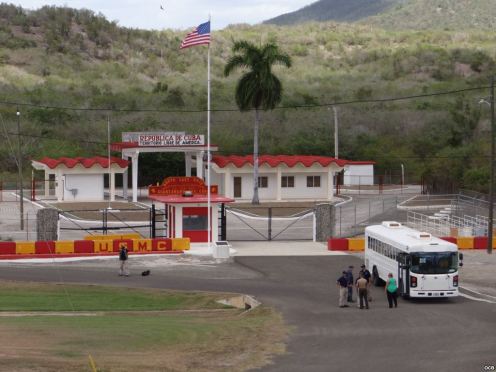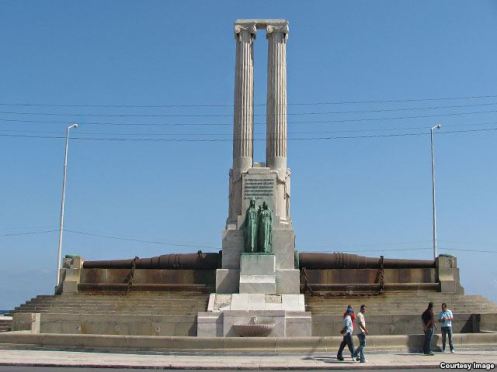As the debate continues, visitors come and go. It’s normal and forms part of the process of re-establishing relations between the United States and Cuba. Also in this exchange, in a not-too-distant future, the American government will return to its Cuban counterpart the territory occupied by the naval base at Guantanamo. And to reciprocate, the government of the island will accept that finally the imperial eagle will return to its original nest at the top of the two columns that, together with the canons, human figures and chains, compose the monument to the victims of the Maine explosion.
I feel that both these things will happen, and I’m not making up scenarios in order to encourage a debate.
Time has shown us that, although the present economic environment is still challenging since there could be negative surprises, as far as the political structure goes, the Caribbean has been and is one of the most stable zones on the planet. So that keeping a military installation of such size in the heart of a place where there are no international conflicts, not even of low intensity, represents an excessive waste of time and an important squandering of money.
The Guantanamo Naval Base was established in 1898, when the United States military occupied the island after defeating Spain in what many of us know as the Hispano-Cuban-American War. Later, with the signature of the first president of the Republic of Cuba, Don Tomas Estrada Palma, on February 23, 1903, the U.S. obtained that much-discussed perpetual lease. It emerged as an historic anomaly and today makes no sense. Neither military, strategic, or regional.
For its part, the monument to the Maine was constructed in 1926, and in 1961 the man who “reflected” on it* ordered the imperial eagle taken down from the pedestal, because its figure was warping the new marketing image of the revolutionary government.
But given present circumstances and the indefinite absence of the insufferable “reflector,” the eagle means nothing more than the piece needed to complete the sculpture. I would dare say that because of the strange culture of rejection that we islanders have for everything that daily surrounds us, out of the two million Cubans who now live in Havana, not even 100 of them have bothered to read the inscription at the foot of the monument.
The return of the territory occupied by the naval base in the municipality of Caimanera in Oriente will be welcome, as will be the return of the image of the raptor to its environment on the Malecon.
Both events will be historic, but of no value. Since nothing about this presses the principle of democracy for a country that requests change and transformation, from the interior of a tempest hidden below a sea of apparent calm.
As that Cuban virtuoso said, known for being the king of the tambor** players and for the charming way he told a joke: “The agendas of governments are divorced from the people; politics get done in the street. The others react with the same naivety as an inexperienced mother.”
Translator’s notes:
*Fidel Castro’s column in Granma newspaper is called “Reflections of Fidel“
**African drum
Translated by Regina Anavy


